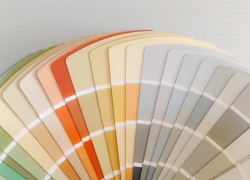3 reasons to color-code your rack PDUs
3 reasons to color-code your rack PDUs

The winds of change are blowing through the data center, and in somewhat unexpected ways. In the midst of murmurs about the Internet of Things, Big Data and even container data centers, a simpler yet incredibly influential transformation is taking place: The data center is changing colors.
First, there's the transition of black cabinets and racks to white equipment to save energy on lighting. White is inherently more reflective, and therefore reduces the amount of light that is needed to illuminate the facility. Thus, some data centers are entertaining the idea of the whiteout approach.
Second, some facilities are introducing color-coded rack power distribution units (PDUs) in order to more effectively organize power infrastructure. While the whiteout effect can be useful for saving electricity on lighting, they should think twice before re-investing in monochromatic PDUs, and there are several reasons why. Here are three of them:
1. Differentiate between A and B power feeds
Ensuring business continuity demands that data center managers operate under the assumption that their primary power source will fail. At the same time, failure isn't an option when thousands of dollars per minute are on the line. That's where redundant power infrastructure comes into play.
"Technicians can tell exactly which PDUs are connected to which feeds."
Within milliseconds of a power failure, critical systems must fail over to the uninterruptible power supply. For this to happen seamlessly, data center operators will ideally have two PDUs per rack, both of which are hooked up and ready to go the moment the primary power source fails. Of course, twice the PDUs mean twice the cables and connections to manage. One of the easiest and most effective ways to streamline feed identification is to only connect PDUs of certain colors to certain feeds. At a glance, technicians and operators can tell exactly which PDUs are connected to which feeds.
2. Make system maintenance more intuitive
UPS failures are still the top source of unplanned data center downtime, but they're hardly the only cause. One of the most preventable catalysts for outages is human error, which, according to research from the Ponemon Institute, accounts for about 22 percent of unplanned downtime in data centers.
Human error can range from spilling a drink to accidentally inducing power shorts by plugging one too many servers into the wrong PDU. While the former is best remedied with a little bit more discretion, the latter is a problem that can be solved through color-coding power strips. Technicians, whether they're swapping out local intelligence units or performing maintenance on specific equipment, will know just by looking which power feed they're working on. With the use of individually color-coded outlets, they can also determine the type of equipment plugged into each receptacle visually (for instance, the purple outlets are dedicated to servers).

3. Estimate power consumption at a glance
Remote power monitoring is the most effective way to measure power consumption. However, technicians responsible for maintaining data center infrastructure can also benefit from being able to estimate voltage at a high level just by looking at a PDU.
Again, this is where color-coded, locking power outlets come into the picture. As mentioned, these receptacles can be used to distinguish between certain types of equipment. Alternatively, they can represent an approximate range for power load, so that technicians can have an at-a-glance understanding of voltage.
This isn't meant to be a replacement for the granularity offered by power monitoring. However, from a general categorization perspective, color-coding is hugely beneficial. According to Fast Company contributor Kevin Purdy, color can be used to improve information recall, and as a way to map certain distinctions in the mind. With color-coded PDUs, data center operators can apply that organizational benefit to the data center to improve the performance, reliability and efficiency of power infrastructure.
Change will most likely accelerate in the data center, and as a result, pressure will mount on managers to optimize their facilities. But where there's risk, there's also opportunity. Capitalizing on it is a matter of having the right palette of resources at your disposal.
Contact us today to learn more.



